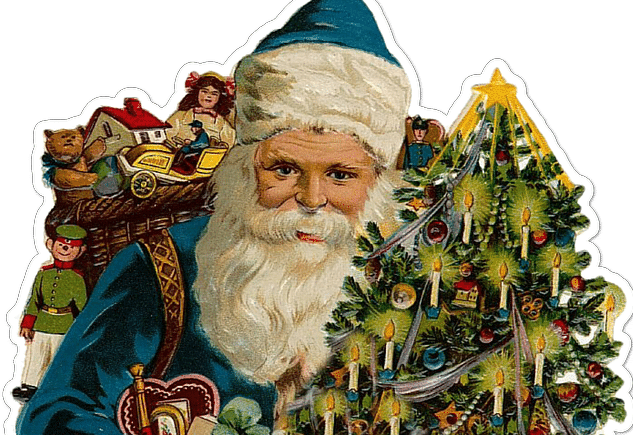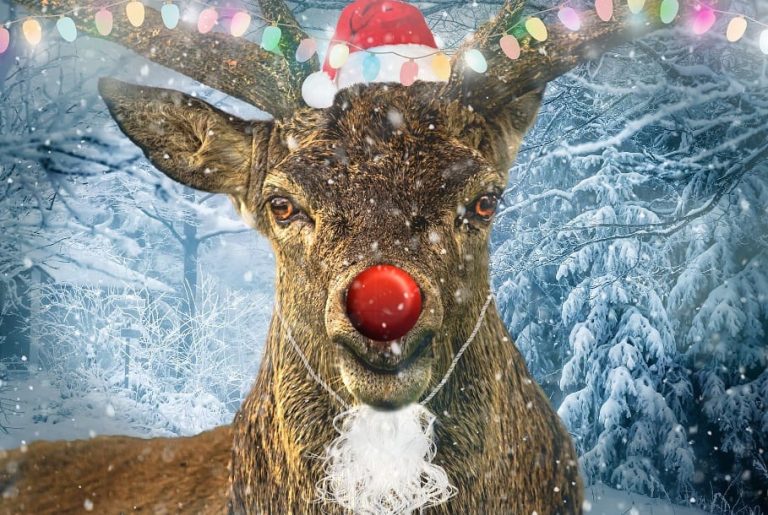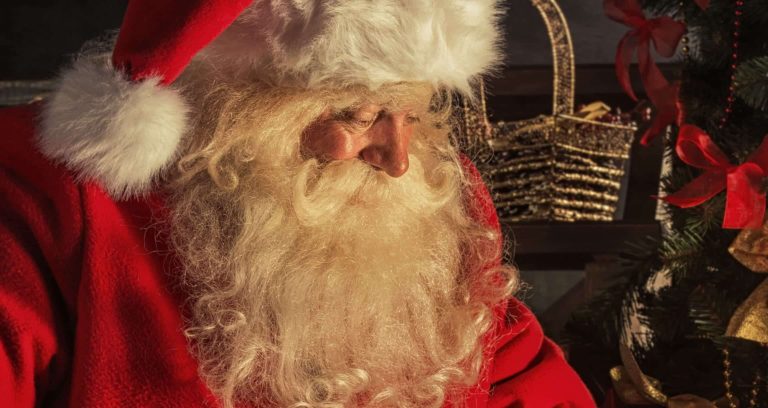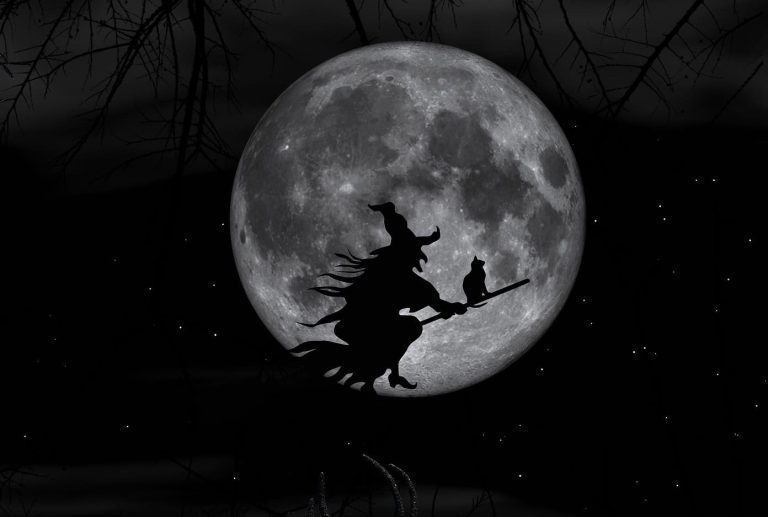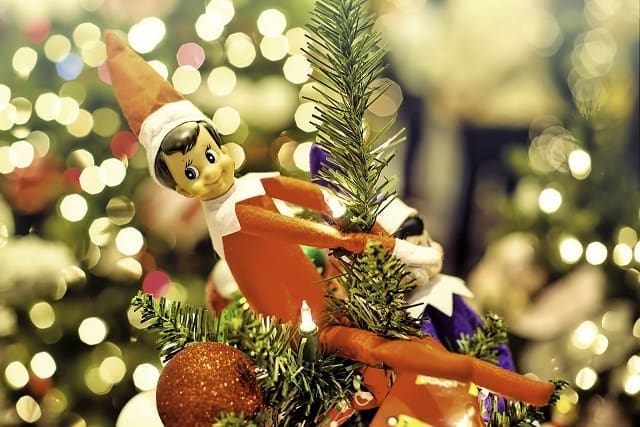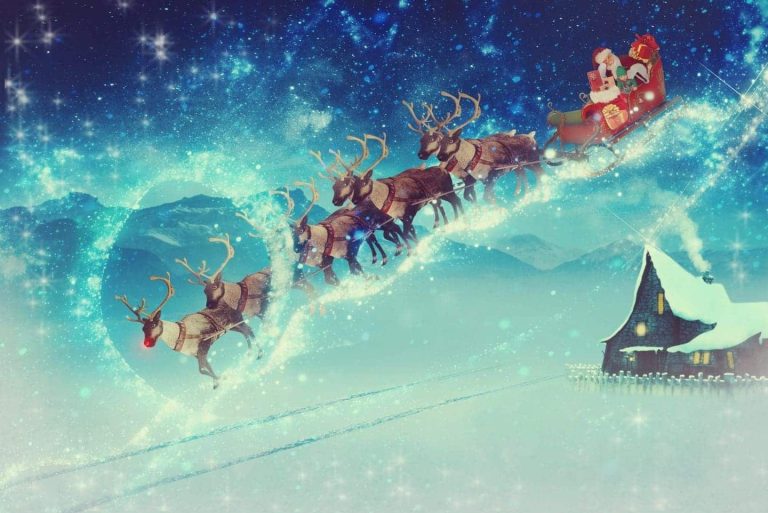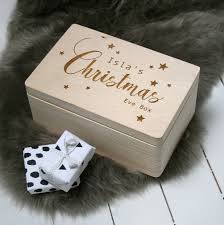Kris Kringle: Everything you wanted to know
Who is Kris Kringle?
Kris Kringle is a legendary figure originating from Western folklore who brings gifts to children on Christmas Eve. Better known as Santa Claus, he is said to live at the North Pole with his wife Mrs Claus and a team of magical elves helping him make toys for all the good boys and girls around the world!
Every year, children leave out milk and treats for Santa to enjoy after delivering their presents.
But how did Kris Kringle become Santa? Why do we celebrate his name – and what is Christingle?
The origins of Kris Kringle
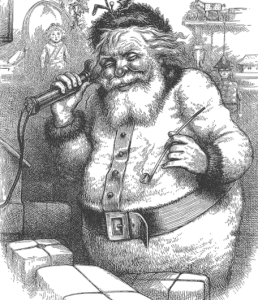
This belief was made popular by the preacher Martin Luther, who wrote about it in his works.
The name Kris Kringle is interchangeable with Santa Claus since both they and Father Christmas are all based on a legendary figure called on Saint Nicholas.
The idea of a figure bringing gifts to children on Christmas Eve is thought to have been taken from Norse folklore in which Odin, the god of winter and magic, would leave presents for children during midwinter.
This idea was later incorporated into the German Krampus tradition, in which a horned creature rewarded good children and punished bad ones.
According to Dutch legend, Sinterklaas (Santa Claus) travels from Spain to the Netherlands each year on December 5 and visits children, bringing them presents and sweets.
Legend has it that he rode on a white horse accompanied by his helpers, called Zwarte Pieten (Black Petes). The event is still celebrated annually in November and December throughout the Netherlands.
He is said to reward the children who have behaved well throughout the year with gifts and treats, while punishing those who didn’t with a lump of coal.
The festive season culminates in Sinterklaasavond (St Nicholas Evening) when Sinterklaas and his helpers deliver the presents to the homes of children.
So, Kris Kringle has become Sinterklaas, but how does Sinterklaas become Santa Claus?
oooOooo
History of Santa – Where did Kris Kringle come from?
This BuzzFeed video offers an excellent – and quick! – way of learning more about Kris Kringle and how Santa has evolved over the years.
oooOooo
Sinterklaas becomes Santa
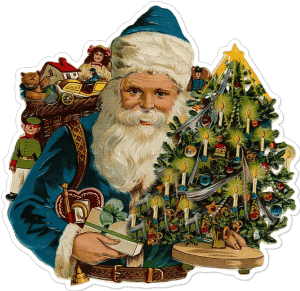
Through stories and songs, these immigrants introduced the figure of a kindly old man who brings gifts to children on Christmas Eve.
Even though the American version of Santa Claus is somewhat different from Sinterklaas, the original Dutch figure remains an important part of Christmas celebrations today.
Indeed, the legend of Saint Nicholas has been adapted in many ways, but its core values remain timeless.
The name change occurred after 1822 when Clement Clarke Moore wrote a poem entitled ‘A Visit from St Nicholas’ which described Santa Claus as an elf-like figure that would ride in a sleigh pulled by eight reindeer and deliver presents to children on Christmas Eve.
This is the first known reference to Kris Kringle and is largely credited for creating the modern-day image of Santa Claus, including his red suit and white beard.
The tradition of Santa Claus since then has been embraced by people around the world due to its cultural significance and the cheerful message it conveys.
To this day, images of a jolly old man in red with a white beard have become synonymous with Christmas celebrations worldwide.
The act of giving gifts during the holiday season has also become an integral part of Christmas celebrations, connecting people from different cultures and backgrounds.
oooOooo
SANTA’S STORY — Kringle Family Christmas Video
The video account is called ‘Christopher Kringle aka Santa Claus’ and the upbeat offering answers lots of questions about Christmas.
Set in the village of Elf, the Kringle Brothers reveal the secrets about how Santa delivers Christmas presents around the world. There’s also an explanation about why goes to such lengths to deliver presents to children who have been good.
It’s 10 minutes long but goes into detail about history and why Santa is celebrated today.
There’s also a lot to learn about treating other people with kindness and respect – people of all ages!
It is aimed at younger viewers, but there’s a lot of fun information for everyone.
oooOooo
Kris Kringle today
Today, Kris Kringle is better known as Santa and is a popular figure during the Christmas season.
He also has a magical ability to travel around the world in his sleigh, pulled by reindeer, delivering toys and gifts to all the good boys and girls who await his arrival!
In addition to being the centrepiece of countless festive movies and stories, Kris Kringle is also a popular figure around the world during the Christmas season.
That’s when children can take pictures with him or sit on his lap to tell him what they want for Christmas.
In modern times, Kris Kringle has become synonymous with Santa Claus and his elves.
He is also now portrayed as an elderly man dressed in red clothing, and often depicted riding a sleigh pulled by reindeer.
The image of Kris Kringle is often seen in decorations, cards and other Christmas-related items and he continues to bring joy to people all over the world during the Christmas season.
What is Christingle and how does it relate to Kris Kringle?
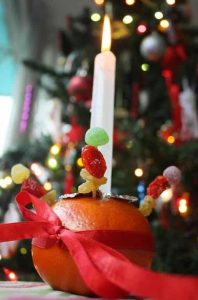
The tradition involves lighting small candles set inside an orange, symbolising the life and love of Jesus Christ.
While oranges were expensive when the tradition started, they weren’t an unusual sight. As the 19th century progressed oranges, and other citrus fruit that became popular in various Christmas cake and pudding recipes, became cheaper as more oranges were imported to Germany and other countries. The Victorians gave them as treats because they were still relatively rare in winter and some stately homes installed orangeries in the 18th century to grow the fruit out of season.
Now, this festive display is often associated with Kris Kringle, who is thought to have brought Christingles to families as a symbol of hope and joy during the festive season.
In modern-day celebrations, Christingles are lit in churches and homes throughout the world.
This simple yet powerful symbol has come to represent the spirit of Christmas — a time for giving, unity and hope.
Essentially, Kris Kringle and Christmas celebrations go hand in hand.
His presence reminds us to appreciate each other, give generously, and share the joy of the season with those around us.
By celebrating Christingle, we pay respect to Kris Kringle’s legacy and continue his tradition of kindness and hope.
oooOooo
What is a Christingle?
This YouTube video offers a great explanation of what Christingle means and why we celebrate it.
Presented by Damian, the video was made for a primary school – but it certainly deserves a wider audience!
So, if you want to learn more about Christingle then Damian explains everything.
He explains everything connected to the Christingle, from the shape of the orange, and why the ribbon is added to illustrate God’s love for us. There’s also a neat trick to add foil to stop the orange juice dripping out before the candle is added. The candle signifies the light of Jesus coming into the world.
He then adds four sticks with sweets on because there are four corners of the world before lighting the candle to show that Jesus is the light of the world.
oooOooo
The symbolic meaning of the orange in Christingle
The orange at the centre of the Christingle is a powerful symbol, representing several important elements of Christmas.
And if you have seen Damian’s video above, you will know what they are – if not, then the fruit itself represents the world, showing how Jesus brought unity and love to all people.
The red ribbon that wraps around it symbolises the blood of Jesus and His sacrifice for us, while the four candles represent His Light that illuminates the darkness of sin.
Finally, the four segments of the orange represent the four evangelists who spread His message to others.
What is Christingle?
Finally, if you want to learn more about what is Christingle, then this website from The Children’s Society will help.
It explains that Christingle celebrations are named after the Christingles that people light during a ceremony.
The site also explains that Christingle events can be intimate or large gatherings. And the Covid lockdown also showed how people can come together in new and innovative ways – many took place online, for example,
These events take place from the end of November, and some will occur in February.
As a quick and well-structured resource for anyone wanting to know more about Christingle ceremonies and what everything means, there’s a lot to recommend the site.

